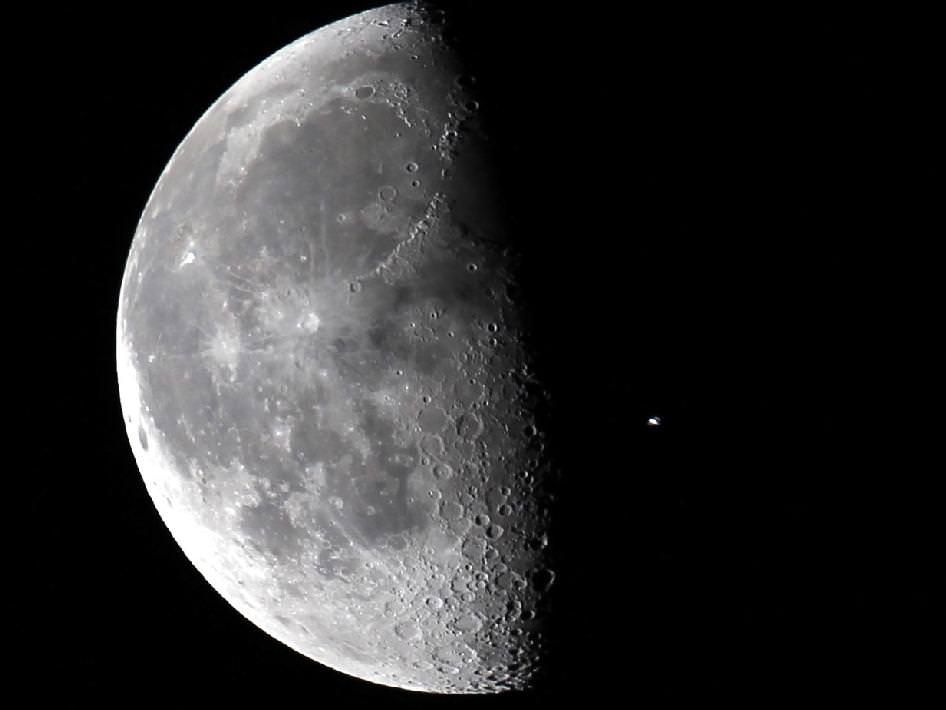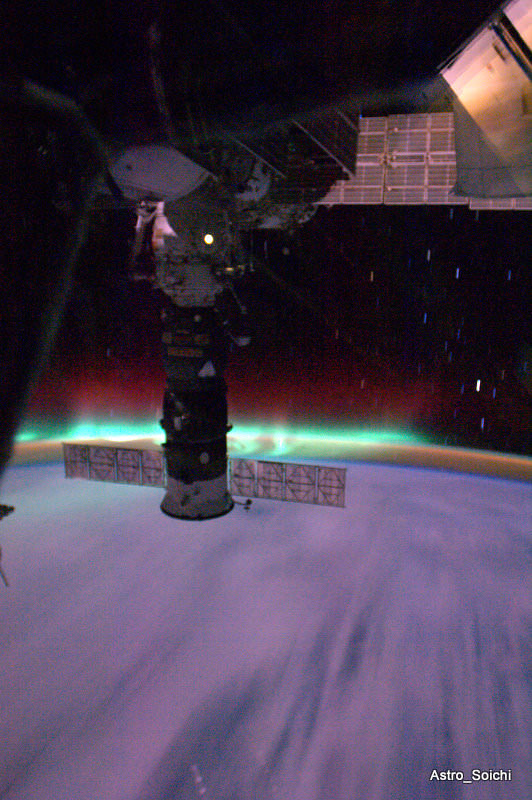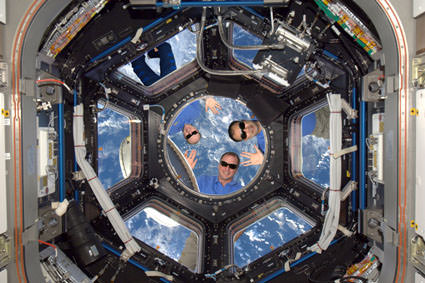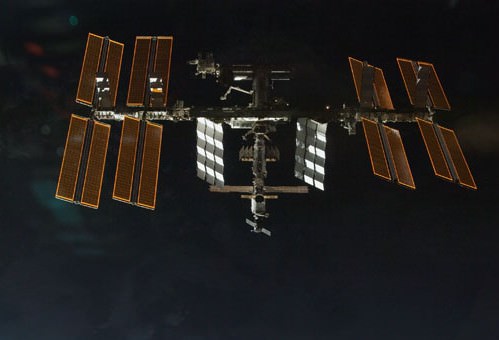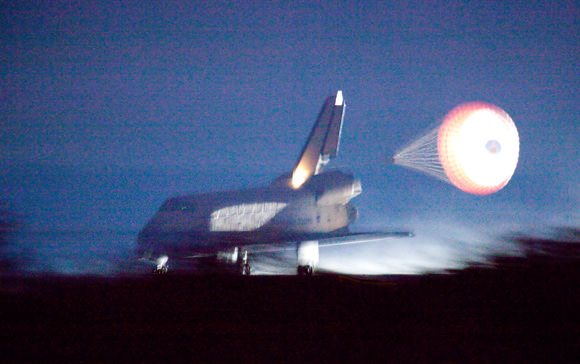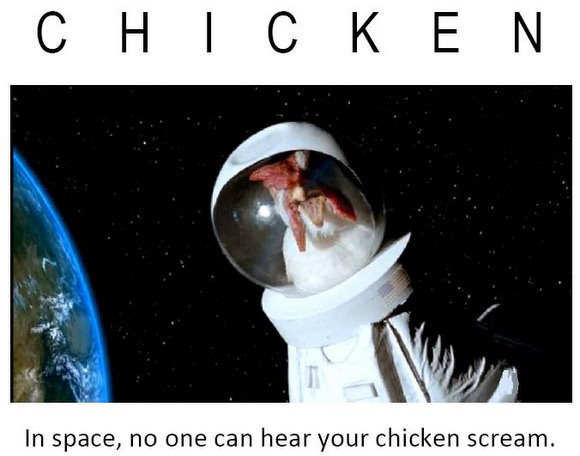[/caption]
The NASA Image of the Day is a webpage that everyone should visit everyday, as there are always great images of our explorations of space and Earth. But this one has a wow factor that is off the charts. It was taken just minutes before space shuttle Discovery launched this past Monday on April 5, 2010, as the International Space Station flew across the face of the moon over Kennedy Space Center in Florida. I know people who were there who thought it was an poignant event, but here photographer Fernando Echeverria captures the event at just the right milimoment as the ISS reached the dark area on the Moon. Amazing, and such incredible detail, too! Click the image or this link to go to the NASA Image of the Day site where you can find larger versions — suitable for framing or desktops!
Double Spaceship Sighting Alert!

Since this perhaps the fourth-to-the-last space shuttle flight, right now is a great opportunity to see the marvelous sights of International Space Station and space shuttle Discovery flying close in tandem. Depending on where you live, Tuesday evening or early Wednesday morning should provide a wonderful opportunity to see the two as the shuttle prepares to dock at 7:44 GMT (3:44 a.m EDT) on April 7, 2010.
Before docking, the two spacecraft will be seen as separate but closely-spaced points of light. The ISS is bigger, so will appear as the brighter object leading the smaller Discovery as they move across the sky. After docking, the ISS will be brighter yet with the additional surface area provided by the docked shuttle. Of course, your viewing ability will depend on cloud cover.
To find out if you’ll be able to see spaceships in your area, there are a few different sites to check out:
Continue reading “Double Spaceship Sighting Alert!”
Amazing Pic: ISS Flys Through Aurora
[/caption]
What an amazing pic of the International Space Station “flying through” an aurora at orbital speeds of 28,000 kmh (17,500 mph)! Super-space-photographer and Tweeter Soichi Noguchi captured this spectacular image earlier today, taking advantage of some rare solar activity. “Fly through Aurora at 28,000kmh. Happy 1,000 tweets” Noguichi wrote on Twitter. NOAA’s Space Weather Prediction Center sent out a notice early this morning saying : “A geomagnetic storm began at 05:55 AM EST Monday, April 5, 2010. Space weather storm levels reached Strong (G3) levels on the Geomagnetic Storms Space Weather Scale.”
And indeed, that solar activity created a picturesque backdrop to the ISS today! Wow!
Noguchi, a.k.a. Astro_Soichi on Twitter is setting a new standard for Twittering and Twitpics from space — and photography, too. He and his Expedition 22 crewmates recently broke the record for the amount of images taken by an ISS crew. They snapped over 100,000 images of space and Earth during their accumulated six-month Expedition, bringing the number of pictures taken from the space station to a grand total of almost 639,000 images. With the new crew arriving at the ISS this past weekend, Expedition 23 is now officially underway.
Check out more of Astro_Soichi’s Twitter pictures on his TwitPic page.
. And here are more amazing space pictures.
ISS Crew Forgets Spacesuits in April 1 EVA
[/caption]
The crew of the International Space Station sent down an image of an unscheduled spacewalk that allegedly took place earlier today. “We wanted to welcome you guys to April, and hopefully we brought you guys some smiles and not a lot of nervousness,” T.J. Creamer radioed down to Mission Control in Houston.
“Yes, you welcomed us to April, and you did it in a grand way!” replied veteran astronaut Shannon Lucid, serving as Capcom. “You have a real problem, but you know it’s outside our ability to help you.”
Creamer and crewmates Soichi Noguchi and Oleg Kotav assured Lucid they were wearing eye protection and Lucid wondered if they put sunscreen on. “Getting vitamin D is great, but don’t stay out too long,” she said.
“Oh, Mom can’t we stay out longer?” Creamer joked.
This image is reminiscent of a picture fellow journalist Rachel Hobson took of me while we were at Kennedy Space Center, below. There was a model of the newly installed Cupola in the KSC press room, and several journalists took turns taking pictures of each other, and the images ended up looking similar to what the ISS crew created today. The astronauts obviously have some digital image editing software on board.
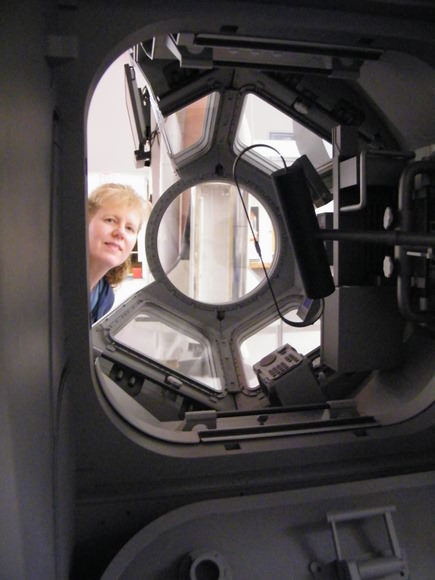
How Long Can the ISS Really Last?
[/caption]
How long can the International Space Station really operate – until 2020, or 2028 or beyond? I recently had the chance to talk with Mark Uhran, NASA’s Assistant Associate Administrator of the ISS. We were both attending a conference on water sustainability at Kennedy Space Center, but Uhran took the time to talk with me about the state of our space station, NASA’s new budget and how that might affect ISS operations, and — speaking of water — how is the urine recycling system working these days?
You can also hear an audio version of this interview on the March 28 edition of 365 Days of Astronomy.
Universe Today: How are things going as far the extension of the ISS? I heard there was recently a meeting with the international partners where they said it could be extended to 2028 if need be.

Mark Uhran: We’ve made the decision in the United States as part of the President’s budget proposal to Congress, so we’re over the hump here in the US. And then we began a series of meetings with the partners starting in Japan last week. Of course each of the partners has been working with us for the past 12-18 months, but they are fully prepared to approach their governments and ask for an extension. There are no technical obstacles to extending to at least 2020, and we’re also going to be doing an evaluation to what the ultimate lifetime of the ISS might be. That evaluation is in process. So we’re looking at whether we can go as long as 2028, but that remains to be seen.
Universe Today: Since we’re here talking about water, how are things going with the recycling system up there on the station. I know there have been some glitches here and there.
Uhran: The station has been a real testbed for developing regenerative water and air technologies. We knew at the time deploying these systems they would be in a testbed mode, and it would probably take about a year to shakedown all the systems and we are making steady progress towards doing just that. All the systems are working today – that’s not to say they will be working tomorrow. We certainly do expect them to go up and down throughout the course of the year as we fine tune them and work out the details. By the end of this year we hope to add a Sabatier (carbon dioxide reduction system) reactor that will allow us produce yet further water on orbit.
Hauling water is a very expensive proposition for us. Once the Sabatier is up there later this year, we’ll have basically the entire designed system deployed and I’m confident by this time next year we’ll have worked out all the filtration issues, the film formation issues, and precipitant issues and we’ll have this tuned so that it is basically available 90% of the time, which is an outstanding availability rate. So, this has been very worthwhile from our point of view not just because of the cost of hauling water to the space station but for the implications for human exploration beyond low Earth orbit.
Universe Today: The new NASA budget, which eliminates Constellation, how do you see that affecting space station operations?
Uhran: Well, space station is relatively small factor in that new budget. We’ve been extended, which is a major achievement from our point of view. But in terms of financial constraints, we are pretty well prepared now to go ahead and operate until the end of the decade, as well as to ramp up our research program on the station. With the assembly process being completed, the crew time now becomes available for supporting research. So most of our activities this year are geared towards repositioning our utilization program so that when the shuttle stops flying and the commercial cargo resupply services begin we are ready to ramp up that program aggressively, and that’s going very well.
Universe Today: I’ve been here at Kennedy Space Center for about a month and a half and a lot of the people here are talking about a possible extension for the space shuttle program. What are your thoughts on that?
Uhran: Well, the shuttle was certainly required for the assembly phase because we were hauling 20 metric ton elements up to orbit. It literally is the equivalent of a six-wheeler truck. But for the utilization phase, we can continue to maintain and operate the space station at much lower supply rates; typically 3 metric tons on a half a dozen to a dozen times a year. So there are other vehicles both that our international partners bring to the table as well as we’re hoping that the commercial US industry will demonstrate in the next 12-24 months that really will meet our needs once those are available. So although we’d all like to see the shuttles continue to fly forever, we really don’t have a requirement on space station for that kind of relatively heavy lift capability.
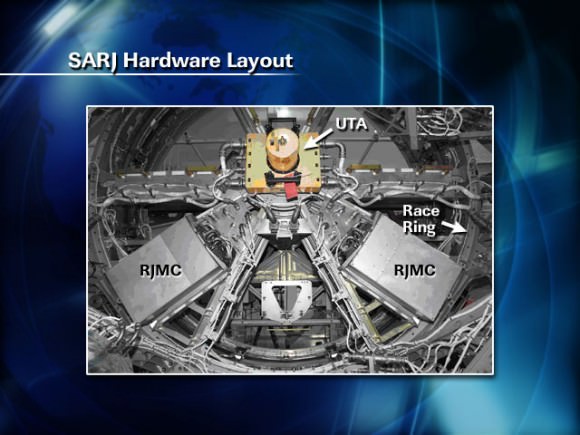
Universe Today: Another issue that has been sort of looming for the space station is the solar alpha rotary joints (SARJ). Any progress on understanding why they aren’t working as hoped?
Uhran: Well, they are working now. And the failure analysis has been completed. So we know the root causes of the problem. The most challenging mechanisms in any spacecraft system are rotating mechanisms. So the control moment gyros, the solar array rotary joints, the thermal radiator rotary joints – they are all rotating mechanisms. And we’re passing power through those mechanisms, which adds to the complexity. So we think that we have all these under control. It turned out with the SARJ that we have determined the cause of the failure, and we’re doing, really two things. We’re operating the system more gently – we ramp it up more slowly, we stop it more slowly. That doesn’t put as much load on the system. And we find that is applicable to all our systems. The more gently we can operate them the less loads they bear and the longer their lifetime. So we’ll be operating the system more gently and we’ll be lubricating them more regularly. So between those two approaches, we’re pretty confident we won’t have any more problems with the SARJ. We do have a couple of tricks in our pocket in the case that we do see further problems but we think we can get there with the two remedial actions we’ve got now.
Universe Today: To do the lubrication requires a spacewalk?
Uhran: It’s an EVA based activity, yes. It is relatively simple. And not even that time consuming. We were lubricating before, we’ll just increase the frequency.
Thanks to Mark Uhran for taking the time to talk with Universe Today. For more information on the International Space station, visit www.nasa.gov/station.
Snowy Soyuz Touchdown!
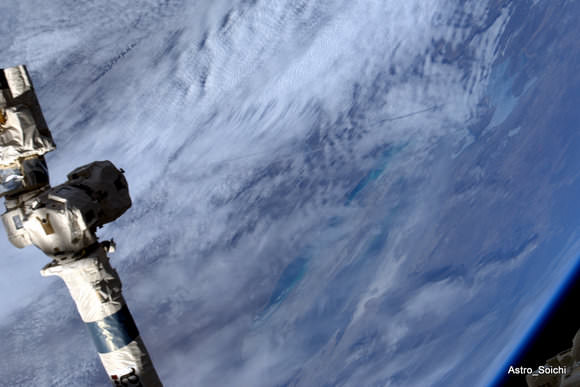
[/caption]
In what was likely a softer –albeit colder — Soyuz landing than usual, ISS Expedition 22 astronaut Jeff Williams and cosmonaut Max Suraev landed their Soyuz TMA-16 spacecraft on the snowy steppes of Kazakhstan Thursday, wrapping up a five-and-a-half-month stay aboard the International Space Station. The entire process of undocking and re-entry of the Soyuz was captured by the newest and hottest space photographer, Soichi Noguchi, (@Astro_Soichi) who has been sending down amazing Twitpics from space. See his very unique images below.

Suraev was at the controls of the spacecraft as it undocked at 8:03 GMT (4:03 a.m. EDT) from the station’s Poisk module. The duo landed at 11:24 GMT (7:24 a.m. EDT) at a site northeast of the Kazakh town of Arkalyk. The recovery teams had to work in frigid temperatures to help the crew exit the Soyuz and readjust to gravity, and then transport them to the Gagarin Cosmonaut Training Center in Star City, outside of Moscow.
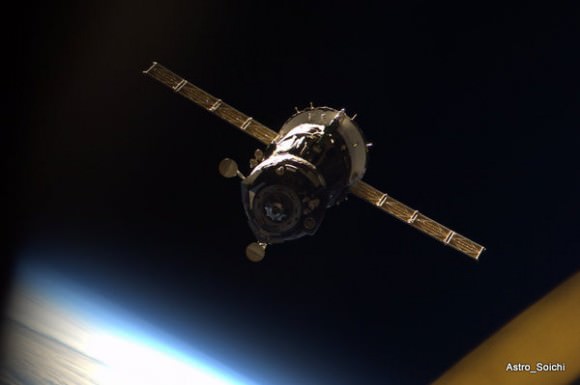
“Fly safe my friends!” wrote @Astro_Soichi.
See all of Noguchi’s photos at his Twitpic page.
ISS Astronaut Sends Twitpics of Chile Earthquake Aftermath
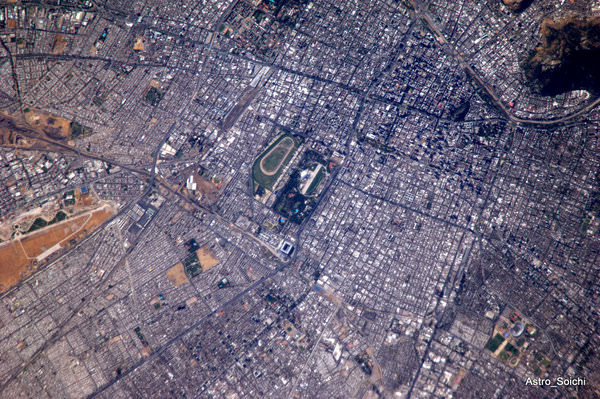
[/caption]
Astronaut Soichi Noguchi, (@Astro_Soichi) who has taken full advantage of being able to use Twitter live from the International Space Station, has been sending down a stream of images he has taken of Chile following the magnitude 8.8 earthquake that hit the country early Saturday. Just recently, he posted the above image, taken directly over Santiago. “Santiago, the capital city of Chile. One day after the Mega earthquake(M8.8) hit the country. We wish the earliest recovery,” Noguchi wrote on Twitter. He also took a video of the ISS astronaut’s view as they flew over Chile earlier today, below.
Here’s another image Noguchi took from the ISS, of the coastline of Chile, near Santiago.
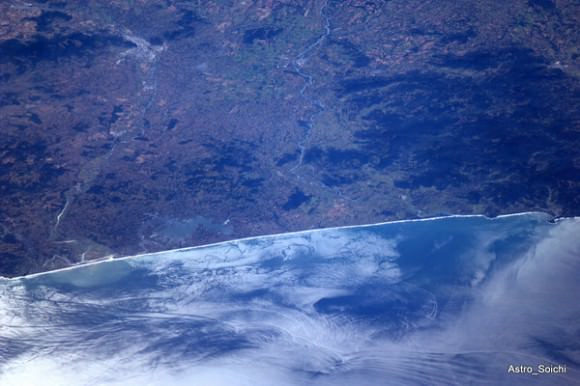
And another, near Concepcion, Chile.
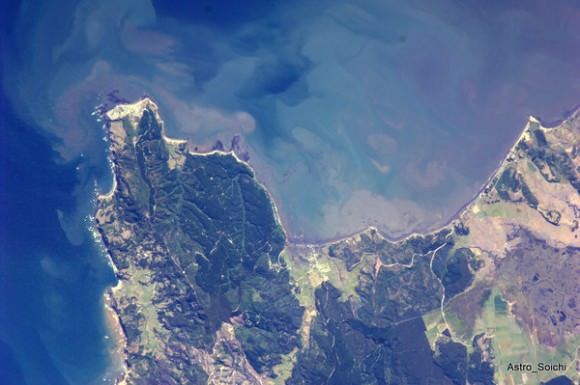
For more images from space, follow @Astro_Soichi on Twitter.
End of an Era: “Lasts” for Shuttle Program
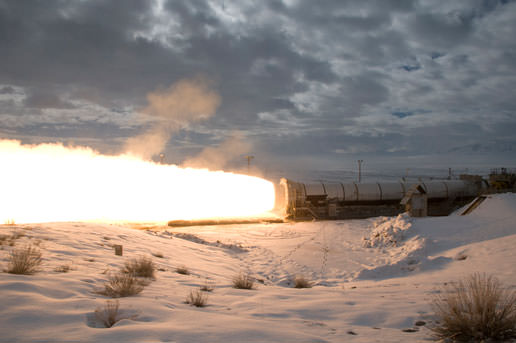
[/caption]
Yesterday, NASA’s Space Shuttle Program conducted the final test firing of a reusable solid rocket motor, in Utah. Look to see the words “final” and “last” frequently over the next few months in regards to the space shuttle. “There is a whole series of lasts coming up,” said space shuttle launch director Mike Leinbach at Endeavour’s landing earlier this week, who talked about the “majesty of this ship” and “people who have fallen in love with this machine.” It’s going to be hard to let them go,” he said, “but we’ve been given a new direction and we’ll process that last shuttle and fly that last mission and move on.”
Here’s a few notes and recent news items on the end of the shuttle program:
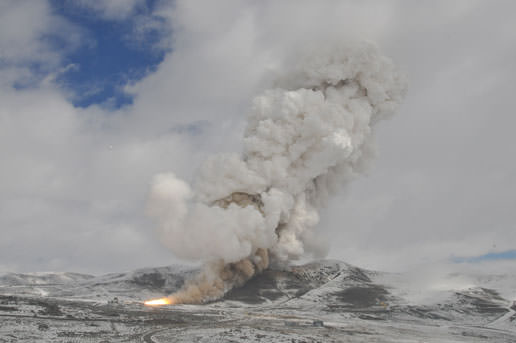
Some spectacular pictures from the final SRB test. FSM-17, (that’s flight support motor, not Flying Spaghetti Monster) burned for approximately 123 seconds — the same time each reusable solid rocket motor burns during an actual space shuttle launch.
The final test was conducted to ensure the safe flight of the four remaining space shuttle missions. A total of 43 design objectives were measured through 258 instrument channels during the two-minute static firing.
The first test was in July 1977. The motors, built by ATK motors have successfully launched the space shuttle into orbit 129 times – out of 130 attempts.
You can watch the entire test firing video below.
And speaking of the end of the shuttle program, NASA held an in-house competition to design a shuttle commemorative patch, and last week, the winners were announced. They are beautiful designs, so I’ll post the 3 winners.
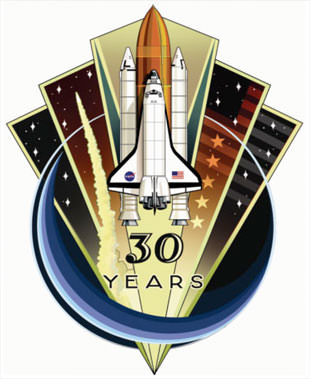
Blake Dumesnil, a Hamilton Sundstrand camera engineer from Johnson Space Center, designed the patch, above, which was chosen by judges out of the 85 designs submitted by the agency’s past and present workforce.
It shows a launching space shuttle bordered by a US flag and stars to commemorate both NASA’s orbiter fleet and the astronauts whose lives were lost while flying aboard them.
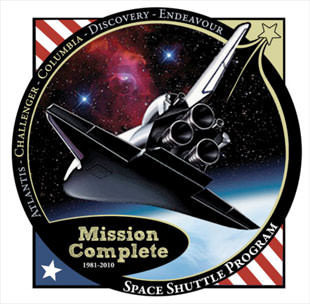
Second place went to Jennifer Franzo from the Michoud Assembly Facility, New Orleans. Her “Mission Complete” logo shows a shuttle in orbit “tipping its wing to the world, as a way to say ‘thank you’ and ‘farewell’ just as a cowboy would wave goodbye into the sunset.”
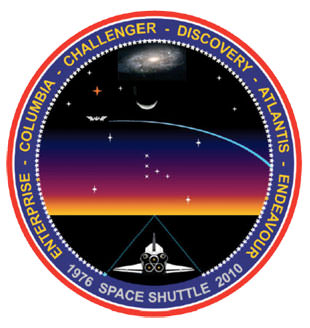
Third place went to Tim Gagnon, a former subcontractor employee at Kennedy Space Center, Florida, whose patch designs have been worn by the astronaut crews on shuttle and International Space Station flights. His contest entry focused on the “orbiter coming home for a safe landing at the conclusion of its final mission.”
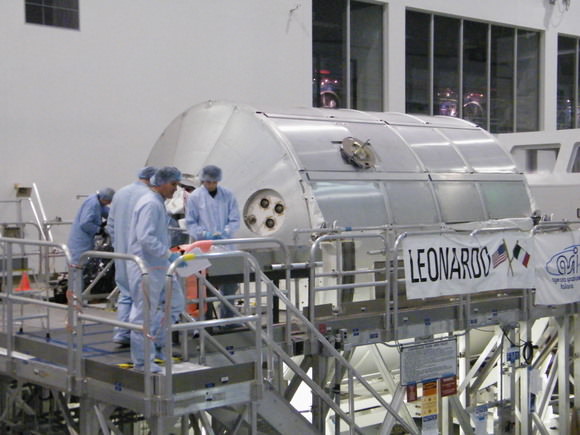
One other news item for one of the final shuttle flights. On STS-133, the second-to-last scheduled shuttle flight, the Leonardo Multi Purpose Logistics Module (MPLM) will be brought up to the ISS to become a Permanent Multipurpose Module (PMM).
Leonardo is currently undergoing processing to bring supplies to the ISS on the STS-131 mission, and I visited the Space Station Processing Facility last week to view the module up close. After returning home from this mission, Leoardo will undergo modifications to ensure safe, long-term operation as the PMM, and to increase the amount of mass it can carry to orbit.
Inside the PMM, experiments in fluid physics, materials science, biology, biotechnology and other microgravity experiments may be conducted.
MPLM’s have been flown inside the payload bays of the shuttles, successfully delivering vital hardware and supplies to the station. The new use for this proven carrier will provide more room and enhance the use of the station.
As promised, here’s the video of the SRB test:
Sources: NASA, collectSPACE, NASA
Endeavour Comes Home to Kennedy Space Center
[/caption]
Space shuttle Endeavour loudly announced its arrival with twin sonic booms, then two minutes later emerged like a phantom out of the darkness to touch down beautifully on runway 15 at Kennedy Space Center. The landing at 10:20 p.m. EST Sunday ended the two-week STS-130 mission to the ISS. After early concerns about the weather, conditions were almost ideal for landing.
“STS-130 is mission complete, and we’re safe on deck” said Commander George Zamka, speaking on the runway after the crew disembarked from Endeavour. “The Cupola is beautiful in both design and function, and Endeavour was perfect throughout the flight… Now it’s time for us to hit the showers and get used to life on Earth again.”
“It was really exciting to land on the first opportunity,” said astronaut Bob Behnken, “and we’re happy to put this capstone on such a great mission.”
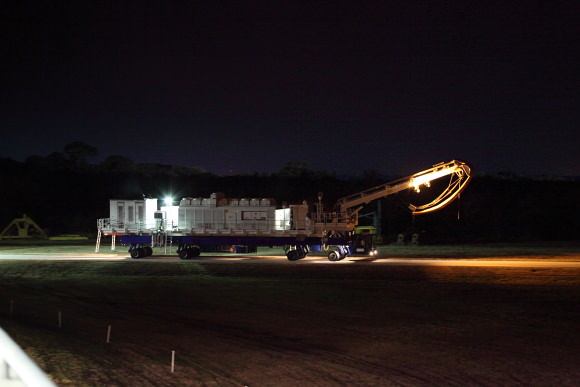
The STS-130 crew delivered the “room with a view” to the ISS – the Node 3, or Tranquility module with the attached Cupola that will provide astronauts with 360 degree views of Earth, space and robotic operations outside the space station.
At the post-landing press conference, mission managers echoed the astronauts’ sentiments.
“It was a fantastic landing day, and Endeavour’s landing here tonight at KSC capped off a perfect mission on orbit,” said Mike Moses launch integration manager for the space shuttle program. “The vehicle performed absolutely flawlessly, the crew did outstanding job,… the installation of Node 3 and Cupola all went perfectly. This just illustrates the great job the all the teams did. Just a spectacular mission.”
Space shuttle launch director Mike Leinbach also looked to what is ahead for the space shuttle program.
“One of the most magical things we get to do here is to walk around the space shuttle on the runway after a mission,” he said. “The shuttle looks outstanding out there, and we’re going to start the final processing flow of Endeavour tonight. So that will be a milestone for the space shuttle program, and we will go into that with our heads held high and we’re going to process the vehicle as we always do and be ready to fly her last mission. A little bit of a sad note, but a great ending to a great mission and we’re looking forward to the next one.”
With this mission the ISS is now 98% mass complete.
Next up for the shuttle and ISS programs is Discovery’s STS-131 mission, currently slated to launch on April 5, 2010.
While this marks the end of this mission — which Ken Kremer and I have been reporting on live from KSC — I will still be hanging around the Space Coast for a few more weeks, so look for more news (and launches!) coming up. And we hope to have photographer Alan Walters on location at KSC for Universe Today covering the final flights of the space shuttle program.
What’s the Internet Really Like in Space?
[/caption]
With the internet now part of daily life on the International Space Station, inquiring minds want to know! Can astronauts visit any websites they want, and what kinds of download speeds do they have in space? And what about that chicken, seen above, that has been gracing the STS-130 execute packages? And what’s the view from the new cupola really like? Astronauts answered those questions and more, at the joint crew news conference last night, where I had the chance to talk the crew members of Endeavour and the ISS.
“Thanks for asking about the internet!” replied ISS astronaut T.J. Creamer with a laugh. “This is a project that many people have worked on to make this possible for us, and some have pulled their hair out to make it successful, so many thanks to those folks. We have access to any website we are allowed to go to as government employees – that’s my best answer! And in terms of download speeds – you know, back in the old days, it kind of compares to 9.6 and the 14.4 kilobyte modems, so it’s not really fast enough to do large file exchange or videos, but it certainly lets us to do browsing and the fun reading we want to do, or get caught up on current events on that day. It’s a nice outreach for us, and of course you’ve heard about the Twittering which is a nice feature that we can partake in also.”
Later, Soichi Noguchi said he could keep up with results of the Olympics just like those of on the ground. Noguchi has been taking advantage of Twitter by sending several Twitpics from space.
The personal web access on the ISS takes advantage of existing communication links to and from the station provides astronauts with email, texting, Twittering and other direct private communications, which NASA says will “enhance their quality of life during long-duration missions by helping to ease the isolation associated with life in a closed environment.”
As for the chicken on the STS-130 execute packages, the STS-130 crew was perplexed. “That is possibly an inside joke that we are not on the inside of,” answered Commander George Zamka. “We don’t see the front pages, so it’s probably on the front pages of the execute package that we don’t get.”
You can see the STS-130 execute packages (and chickens) at this link.
Asked about the views from the new cupola, the astronauts waxed poetic. “It’s so hard to put into words the view that we see out those beautiful seven windows,” Kay Hire said. “It’s like comparing a black-and-white analog picture to a super high-def color picture. It’s just phenomenal what we can see out there. The most stunning thing I’ve seen so far is just some beautiful thunderstorms from above. It’s really interesting to watch the way the lightning jumps from cloud to cloud far below us.”
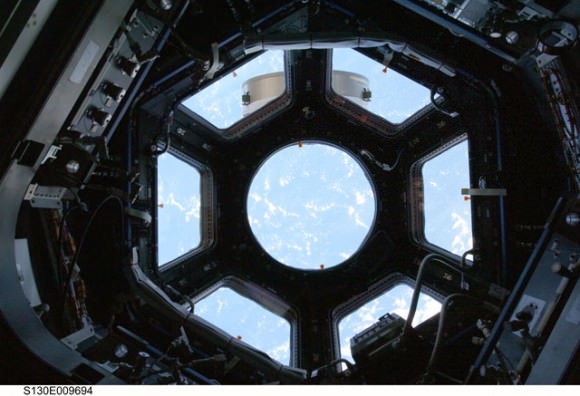
“Getting to look out the shuttle windows and the station windows has been awesome,” added pilot Terry Virts. “But when we looked out the cupola, it’s impossible to put into words, but it took my breath away. We’ve only had a few opportunities to go down there because we have been busy inside doing work, but I think the favorite view that I’ve had has been watching a sunrise.
“At night, you can see cities if you’re over land and then when you pass into the sunlight you get the blue limb (of Earth) and then it turns into pink and different colors like that and then when the sun pops up, it’s like an instantaneous floodlight in your eyes, it kind of overwhelms you. But the view is amazing. You can sit there and perceive the entire Earth limb and you can really see the Earth has that round shape. It’s just amazing.”
ISS Commander Jeff Williams agreed. “To be able to see the entire Earth in one glance and see the entire limb of the Earth all the way around and see the spherical shape of the Earth is going to be new to us. Obviously, we’ve seen a lot of those segments of that view before, but only one segment at a time through a narrower field of view,” he said. “We have taken a lot of photography up here, we will continue to do so. The cupola will offer us a very unique and new opportunity for photography in a new way, particularly with wide angle lenses, which we’re already playing with a little bit to try to be able to share that experience with folks on Earth.”
Spacewalker Bob Behnken said the view from the cupola was as good as or maybe better than the view from a being out on an EVA.
“The reason being you actually have time to look around through all the windows,” he said. “Usually during a spacewalk, there’s a fair amount of work to get done. There wasn’t a lot of time for the sightseeing you might like to do out of a window like cupola.
“The other thing the cupola affords you is the opportunity to share some of those views with other people. We’re really limited on the photography we can do during a spacewalk, but taking one of the HD cameras or some still photos inside the cupola is really going to allow us to share those beautiful sunrises and sunsets and Earth views in general with everyone on the ground.”
You can watch the entire ISS/STS-130 news conference below.

